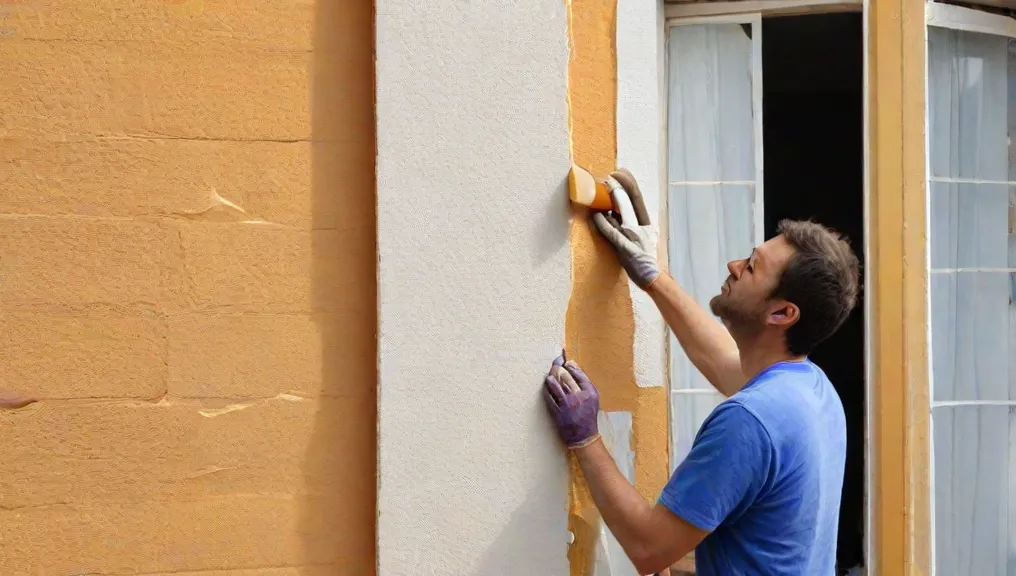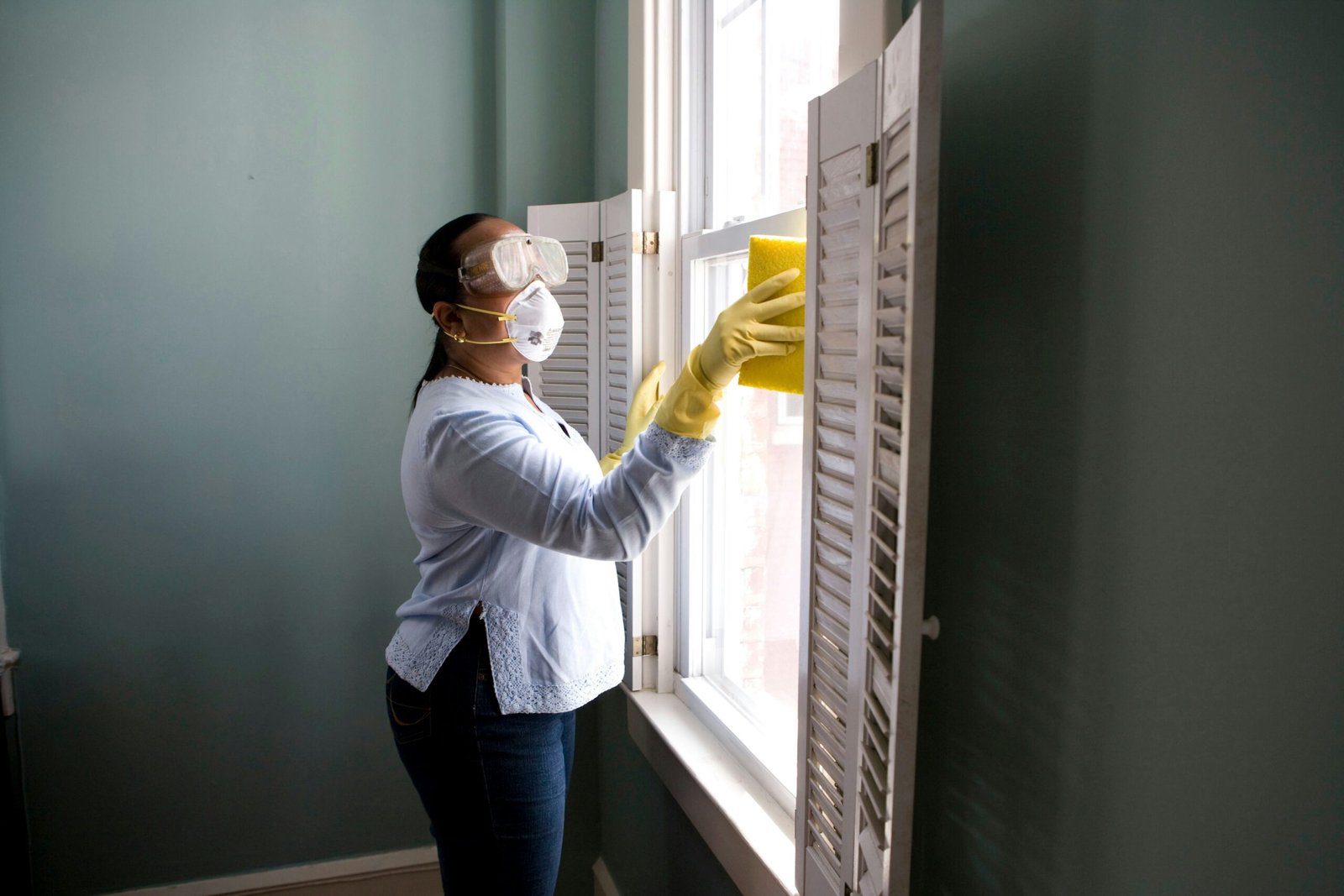Repainting your house facade after ten years is crucial for maintaining its aesthetic appeal, structural integrity, and property value. Learn the signs it’s time to repaint, the benefits of a fresh coat, how to choose the right paint, and tips for preparing your house. Discover the pros and cons of DIY versus hiring professionals, and essential maintenance tips to extend the life of your paint job. Investing in regular repainting ensures your home remains beautiful and protected from environmental elements.
Introduction: The Importance of Repainting Your House Facade
The facade of a house is often the first aspect that catches the eye, serving not only an aesthetic function but also providing essential protection against environmental elements. Over the span of ten years, a home’s exterior can undergo significant wear and tear, making the need for repainting a critical consideration. Paint acts as a shield, safeguarding the underlying materials from moisture, UV rays, and temperature fluctuations. When this protective layer begins to deteriorate, the structural integrity and visual appeal of your home can be compromised.

Weather conditions, such as heavy rain, intense sunlight, and fluctuating temperatures, contribute to the gradual degradation of paint. Additionally, environmental pollutants and biological growth like mold and mildew can further erode the facade. These factors collectively impact the durability and appearance of the paint, often resulting in fading, cracking, or peeling. A fresh coat of paint not only revitalizes the look of the house but also reinforces its defense against these damaging influences.
Please, read our post and do not forget to check our YouTube channel “Grig Stamate”:
https://www.youtube.com/@GrigStamate
You will find there, thousands of designing, furnishing, and decorating ideas for your home interior and outdoors.
Allow me to mention one of them:
Colorful Painted Ceilings Are Making a Comeback (video)
Maintaining a well-painted exterior is more than just an aesthetic choice; it is an investment in the longevity and value of your property. Regularly scheduled repainting ensures that the facade remains robust, visually appealing, and capable of withstanding the elements. As we delve deeper into the specifics of repainting, we will explore how to assess the condition of your current paint, the benefits of different types of paint, and the best practices for a successful repainting project. By understanding the importance of timely repainting, homeowners can make informed decisions that enhance both the beauty and durability of their homes.
Signs It’s Time to Repaint
Repainting the house facade every ten years is not just about aesthetics; it’s also about maintaining the structural integrity and value of the property. Several signs indicate that it might be time to apply a fresh coat of paint. One of the most apparent signs is peeling or cracking paint. As paint ages, it loses its elasticity and adhesion, causing it to crack and peel away from the surface. This not only diminishes the look of your home but can also expose the underlying material to the elements, leading to further damage.
Another clear indicator is faded colors. Over time, exposure to the sun’s ultraviolet rays can cause the paint to lose its vibrant hue, making your house look dull and worn out. If you notice that the color of your facade has significantly faded, it’s a good sign that a repaint is due. Additionally, visible stains or mildew can mar the appearance of your home. These can be caused by various factors, including excessive moisture, and can lead to more severe issues if not addressed promptly. A fresh coat of paint can help protect against these elements and restore the facade’s pristine look.
Weather damage is also a critical sign to look out for. Houses are constantly exposed to weather elements such as rain, wind, and sun, which can cause significant wear and tear over time. Look for signs like warping, bubbling, or moisture damage on the surface of the paint. These signs suggest that the protective layer of paint has been compromised, necessitating a repaint to safeguard the house structure.
By being attentive to these signs—peeling or cracking paint, faded colors, visible stains or mildew, and damage from weather elements—homeowners can effectively determine when it’s time to repaint their house facade. Taking action at the right time ensures that the home remains not only visually appealing but also well-protected from potential damage.
Benefits of Repainting After Ten Years
Repainting your house facade after ten years offers numerous advantages, significantly enhancing both the appearance and functionality of your home. One of the most immediate benefits is the enhancement of curb appeal. A fresh coat of paint can transform the look of your property, making it more inviting and visually appealing. This is particularly important if you are considering selling your home, as first impressions are crucial in real estate. A well-maintained exterior can attract potential buyers and potentially lead to a quicker sale.
Beyond aesthetics, repainting also serves as a protective measure against weather damage. Over time, exposure to elements like rain, wind, and sunlight can cause the paint to deteriorate, leading to cracks and peeling. These imperfections not only look unsightly but can also allow moisture to penetrate the walls, leading to mold, mildew, and structural damage. A new layer of high-quality paint acts as a shield, preventing such issues and prolonging the lifespan of your home’s exterior.
In terms of financial benefits, repainting your house facade can significantly increase property value. A home that appears well-maintained and up-to-date is more likely to appraise higher, providing a better return on investment. Additionally, regular maintenance through repainting can result in long-term cost savings. By addressing minor issues before they escalate into major repairs, homeowners can avoid expensive fixes down the road. Regular upkeep, including repainting, ensures that the home’s exterior remains in optimal condition, reducing the likelihood of costly structural damage.
Finally, a new paint job improves the overall aesthetics of your home, creating a pleasant and welcoming environment. Whether you choose to stick with a classic color scheme or opt for a modern update, repainting allows you to personalize your space, reflecting your style and taste. This not only boosts your pride in ownership but also enhances the overall quality of life for you and your family.
Choosing the Right Paint and Colors
When considering repainting your house facade after a decade, selecting the right type of paint and color scheme is crucial for both aesthetics and durability. The choice of paint can significantly impact the longevity and appearance of your home exterior. Among the various types available, acrylic, latex, and oil-based paints are the most common. Acrylic and latex paints are water-based, known for their ease of application, quick drying times, and resistance to cracking and fading, making them a popular choice for residential exteriors. Oil-based paints, while more durable and providing a smoother finish, require longer drying times and are less environmentally friendly.
The importance of high-quality paint cannot be overstated. Investing in premium paint ensures better coverage, enhanced durability, and longer-lasting color retention. High-quality paints are formulated to withstand harsh weather conditions, protecting your home from UV rays, moisture, and temperature fluctuations, thereby reducing the frequency of repainting.
Choosing the right color palette involves several considerations. The architectural style of your home plays a vital role in determining suitable colors. For instance, a Victorian house may benefit from a more traditional and ornate color scheme, while a modern home could look striking with minimalist, neutral hues. Personal preference also matters, as the colors should resonate with your taste and lifestyle. Additionally, observing neighborhood trends can provide insights into popular and harmonious color choices, ensuring your home blends well with its surroundings.
Color coordination is essential for creating a cohesive and appealing look. When selecting colors, consider the main body of the house, as well as complementary trims and accents. Light colors can make a house appear larger and more inviting, while darker shades can add drama and sophistication. Trims and accents in contrasting or complementary colors can enhance architectural details and create visual interest. By carefully choosing the right paint and colors, homeowners can significantly enhance their house facade, adding both value and curb appeal.
Preparing Your House for Repainting
Before embarking on the task of repainting your house facade, thorough preparation is crucial to achieving a durable and visually appealing result. Proper surface preparation can significantly extend the lifespan of your new paint job. Start by cleaning the facade to remove dirt, grime, and mildew. Using a pressure washer or a scrub brush with a suitable cleaning solution can effectively eliminate surface contaminants, ensuring a clean base for paint adhesion.
Once the surface is clean, it’s essential to remove any old, flaking paint. Loose paint can prevent the new coat from adhering properly, leading to peeling and uneven coverage. Scrape off the old paint using a putty knife or paint scraper. For more stubborn areas, a wire brush or an electric paint remover can be employed. After removing the old paint, inspect the facade for any damages such as cracks, holes, or rotted wood. Repair these areas with appropriate fillers or sealants to create a smooth, solid surface.
Sanding is the next critical step in preparing your house for repainting. Sanding rough areas and edges helps to create an even surface that allows the new paint to adhere more effectively. Use medium-grit sandpaper for general sanding and fine-grit sandpaper for finishing touches, ensuring that the surface is smooth and free of imperfections. Additionally, it is advisable to caulk any gaps around windows, doors, and trim to prevent moisture intrusion and improve the overall finish.
The final step in preparation is applying a primer. Primer serves as a preparatory coat that enhances paint adhesion and provides a uniform base for the topcoat. Choose a primer that is compatible with the type of paint you plan to use. Apply the primer evenly, allowing it to dry completely before proceeding with the paint application. By dedicating time and effort to these preparation steps, you can ensure a long-lasting and aesthetically pleasing paint job for your house facade.
DIY vs. Hiring Professional Painters
When considering whether to repaint your house facade after ten years, the decision often boils down to choosing between a DIY approach and hiring professional painters. Each option comes with its own set of advantages and disadvantages that can significantly impact the cost, time, and quality of the project.
Opting for a DIY repainting project can be financially appealing, especially for homeowners on a tight budget. The primary cost considerations include purchasing paint, brushes, rollers, ladders, and other necessary materials. While these expenses are generally lower than hiring professionals, the trade-off often lies in the time and effort required. Repainting a house facade is a labor-intensive task that demands not only physical exertion but also a level of skill and patience. For those with a knack for painting and some prior experience, DIY can be a rewarding endeavor. However, for novices, the learning curve can be steep, leading to potential mistakes and a less-than-perfect finish.
On the other hand, hiring professional painters offers a host of benefits that often justify the higher cost. Professionals bring expertise and experience to the table, ensuring a high-quality finish that can enhance the aesthetic appeal and longevity of your home’s exterior. They are equipped with the right tools and knowledge to handle various surfaces and conditions, providing a level of efficiency that is hard to match with a DIY effort. Additionally, professional painters can complete the project in a fraction of the time it would take an amateur, allowing homeowners to enjoy their revamped facade sooner.
Ultimately, the decision between DIY and hiring professional painters hinges on individual circumstances. Homeowners with limited time, skill, or desire to undertake a large-scale painting project may find the investment in professional services worthwhile. Conversely, those who relish a hands-on approach and seek to save on costs might prefer the DIY route, provided they are prepared for the challenges it entails. By weighing these factors, homeowners can make an informed choice that aligns with their budget and capabilities.
Maintenance Tips to Extend Paint Life
To maximize the longevity of your house facade’s new paint job, regular maintenance is essential. Proper care can significantly extend the life of your paint, ensuring that your home remains vibrant and protected for years to come. Here are some key maintenance tips to consider:
Regular Cleaning: Accumulated dirt, grime, and pollutants can wear down the paint over time. Cleaning the exterior of your home at least once a year with a gentle detergent and a soft brush or sponge can prevent buildup. For tougher stains, a pressure washer on a low setting can be effective, but care should be taken not to damage the paint.
Inspecting for Damage: Periodically inspect your house facade for any signs of damage, such as cracks, peeling, or blistering paint. These issues can allow moisture to seep in, leading to further deterioration. Early detection and prompt repairs can prevent minor problems from becoming major headaches.
Touch-Up Painting: Address small areas of chipped or faded paint with touch-up painting. Keeping a small quantity of the original paint can make this task easier and ensure color consistency. Touch-ups not only maintain the aesthetic appeal but also provide a protective barrier against the elements.
Protecting from Harsh Weather Conditions: Harsh weather conditions, such as intense sunlight, heavy rain, and strong winds, can take a toll on your house facade. Consider installing protective features like awnings, shutters, or overhangs to shield your home from the elements. Additionally, choosing high-quality, weather-resistant paint can offer added protection.
Preventative Measures for Mildew and Mold: Humid climates can lead to the growth of mildew and mold on painted surfaces. To prevent this, ensure proper ventilation around your home and trim back any vegetation that may trap moisture. Using paints with mildew-resistant additives can also be a proactive measure.
By following these maintenance tips, homeowners can ensure their house facade remains in excellent condition, providing both aesthetic value and structural protection. Regular upkeep not only enhances the appearance of your home but also extends the life of your paint investment.
Conclusion: Investing in the Longevity of Your Home
Repainting your house facade after ten years is not just a cosmetic upgrade; it’s an investment in the longevity and value of your home. Over the course of the blog post, we’ve discussed various critical aspects that underscore the importance of this maintenance task. From protecting the exterior walls against weather elements to preventing structural damage, a fresh coat of paint serves multiple protective functions.
Moreover, a well-maintained facade significantly enhances your home’s curb appeal. This can be particularly beneficial if you’re considering selling your property, as prospective buyers are often drawn to homes that appear well-cared for. Beyond the aesthetic and protective advantages, repainting can also identify and address minor issues before they escalate into more costly repairs.
It’s important to view repainting as a proactive measure rather than a reactive one. Regular maintenance, including repainting, can extend the lifespan of your exterior surfaces, ultimately saving you money in the long run. The choice of high-quality paint and professional workmanship can further ensure that your home remains in optimal condition for years to come.
We encourage homeowners to assess their own house facade critically. Look out for signs of peeling, fading, or cracking paint, as these are clear indicators that it’s time for a refresh. By staying ahead of these signs, you can maintain the integrity and beauty of your home.
In conclusion, repainting your house facade after a decade is a prudent investment that offers numerous benefits. It safeguards your home, enhances its aesthetic appeal, and preserves its market value. Take the time to evaluate your exterior and consider scheduling a repainting project to keep your home looking its best and standing strong against the elements.
Other related posts from our website:
Let’s see here, three of them:
https://howtobuildahouseblog.com/this-is-how-you-paint-the-facade-in-4-steps/
https://howtobuildahouseblog.com/how-to-correctly-choose-the-color-of-the-house-facade/
https://howtobuildahouseblog.com/harmony-and-bravery-in-choosing-colors-for-the-house-facade/
Thank you so much for your attention.
We also sincerely hope you like our ideas from this post, and you have also enjoyed our uploaded YouTube video.
See you next time at another article.
Thank you so much for your time. Bye now


